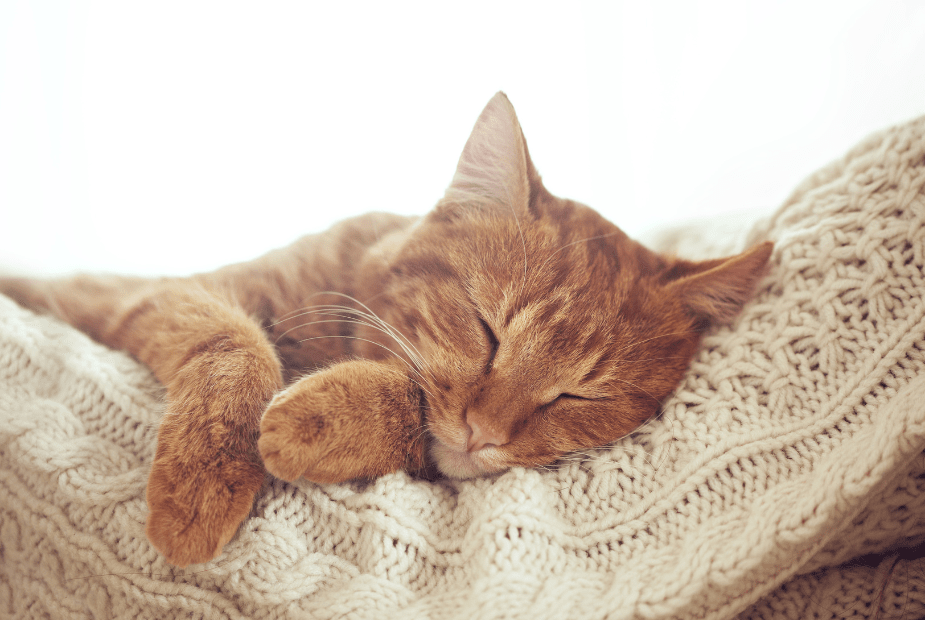Key Takeaways
- Cat emotional support provides therapeutic companionship that can improve your mental health.
- Unlike service animals, emotional support cats are valued for their natural bond rather than trained tasks.
- The comforting presence and purring of a cat can help alleviate feelings of overwhelm.
- Many pet owners are discovering scientifically-backed benefits of having an emotional support cat.
Table of Contents
- What Is a Cat Emotional Support Animal?
- Cat Emotional Support vs. Service Animals vs. Therapy Cats
- Does Your Cat Qualify as an Emotional Support Animal?
- The Science Behind Cat Emotional Support
- Are There "Best" Cat Breeds for Emotional Support?
- How to Get a Legitimate ESA Letter for Your Cat (No Scams!)
- Your Rights and Responsibilities as an Emotional Support Cat Parent
- Introducing an Emotional Support Cat to Your Home, Set Up for Calm
- Essential Daily Care for Emotional Support Cats, Naturally
- Traveling With Your Emotional Support Cat, A Stress-Free Game Plan
- Navigating Housing With an ESA Cat, Winning Over Landlords Naturally
- Products That Support Cat Emotional Health, Essentials for Your Support Cat
Cat Emotional Support: Complete Natural ESA Guide
When life feels overwhelming, your cat's gentle purr and warm presence might be more than comfort, it could be legitimate cat emotional support that transforms your daily well-being. Unlike service animals trained for specific tasks, emotional support cats provide therapeutic companionship through their natural bond with you, offering scientifically-backed mental health benefits that many pet parents are just discovering.
To help your cat provide the best possible support, consider integrating natural calming support into their routine. The journey to understanding feline emotional support involves navigating legal definitions, qualification requirements, and practical care strategies that honor both your needs and your cat's natural temperament. Whether you're exploring ESA options or seeking to optimize your current support cat's role, this guide covers everything from official documentation to daily wellness routines that keep your feline companion thriving in their supportive role.
For cats who may also struggle with allergies or immune challenges, allergy relief and immune support remedies can help maintain their comfort and emotional availability as your ESA.
What Is a Cat Emotional Support Animal?
An emotional support animal cat is a feline companion whose presence provides therapeutic benefit to someone with a documented mental health condition. Unlike pets kept purely for companionship, ESA cats serve a specific emotional or psychological function, offering comfort that helps manage symptoms of anxiety, depression, PTSD, or other qualifying conditions.
The key distinction lies in documentation and purpose. Your cat becomes an official ESA through a letter from a licensed mental health professional who determines that your feline's companionship is integral to your mental health treatment plan. This isn't about training, it's about the natural bond and comfort your cat already provides.
Quick Facts: Is My Cat an ESA?
• Your cat provides comfort during emotional distress
• A mental health professional recommends animal companionship
• You have a qualifying mental health condition
• Your cat's presence reduces symptoms or improves daily functioning
Rachel, a BestLife4Pets community member, discovered her rescue tabby Oliver naturally sensed her anxiety episodes, positioning himself on her lap during difficult moments. When her therapist recognized this pattern, Oliver's instinctive support became officially recognized as therapeutic intervention, transforming both their lives through the ESA designation.
Cat Emotional Support vs. Service Animals vs. Therapy Cats

Understanding the differences between emotional support cat designations and other working animals prevents confusion and sets appropriate expectations for legal protections and public access rights.
If you want to learn more about the distinctions and legalities, see can cats be service or emotional support animals for a detailed breakdown.
| Type | Training Required | Legal Rights | Who Approves | Primary Role |
|---|---|---|---|---|
| ESA Cat | None, natural temperament | Housing accommodations | Licensed mental health professional | Emotional comfort and companionship |
| Service Cat | Extensive task-specific training | Full public access rights | Professional trainer/handler | Performs specific disability-related tasks |
| Therapy Cat | Temperament testing and certification | Facility visitation only | Therapy animal organization | Visits hospitals, schools, nursing homes |
While service cats are extremely rare compared to service dogs, they can be trained for specific tasks like alerting to seizures or retrieving medications. However, most cats providing emotional support fall into the ESA category, where their natural calming presence serves as the therapeutic intervention without requiring specialized training or public access privileges.
Does Your Cat Qualify as an Emotional Support Animal?
Qualification for a cat emotional support animal depends on both your mental health needs and your cat's natural ability to provide comfort during difficult moments. The process focuses on documented therapeutic benefit rather than your cat's breed, age, or training level.
Mental health conditions commonly supported by ESA cats include: anxiety disorders, depression, PTSD, phobias, panic disorders, and other conditions where animal companionship provides measurable emotional relief. The key requirement is demonstrating that your cat's presence helps manage symptoms or improves your daily functioning.
ESA Cat Comfort Checklist:
✓ Your cat seeks you out during stressful moments
✓ Petting or holding your cat reduces anxiety
✓ Your cat's presence helps you sleep better
✓ You feel calmer when your cat is nearby
✓ Your cat seems to sense your emotional state
Most mental health professionals require 6-12 months of documented history showing how your cat provides emotional support before issuing an ESA letter. This isn't about "proving" your cat's abilities, it's about establishing the therapeutic relationship that already exists between you and demonstrating how this bond supports your mental health treatment goals.
The Science Behind Cat Emotional Support
Research consistently demonstrates that cat emotional support creates measurable physiological changes that support mental health recovery. A 2019 study published in Applied Animal Behaviour Science found that cat owners showed significantly lower cortisol levels and improved mood scores compared to non-pet owners, with the most pronounced benefits occurring during direct interaction with their cats.
The therapeutic mechanisms go beyond simple companionship. Cat purring produces vibrations between 20-50 Hz, frequencies that research suggests may promote bone healing and reduce pain perception.
When cats knead with their paws, they release endorphins that benefit both the cat and their human companion. This natural bonding behavior creates what researchers call "emotional contagion", where the cat's calm state directly influences their owner's stress levels.
For more on the science behind emotional support animals, see this overview of emotional support animals.
Are There "Best" Cat Breeds for Emotional Support?

While any cat can legally serve as an emotional support animal, certain breed characteristics may align better with therapeutic companionship. Temperament matters more than pedigree, a gentle rescue tabby often outperforms a pedigreed cat with an aloof personality.
Breeds known for affectionate, calm dispositions include Ragdolls, Maine Coons, and Persian cats. However, mixed breeds from shelters frequently display the adaptability and emotional intelligence that make exceptional ESA companions. Adult cats (2+ years) often provide more predictable temperaments than kittens, whose personalities are still developing.
| Trait | Ideal for ESA Work | May Need Extra Support |
|---|---|---|
| Social Response | Seeks human contact, purrs readily | Hides from strangers, avoids touch |
| Stress Tolerance | Adapts to routine changes | Becomes anxious with disruption |
| Vocalization | Soft meows, responsive to voice | Excessive yowling or complete silence |
| Physical Comfort | Enjoys lap time, gentle handling | Scratches or bites when touched |
Senior cats from shelters often make outstanding emotional support animals. Gary, a 55-year-old retiree, found his perfect companion in a 7-year-old tabby who had been overlooked for months. "She seemed to understand exactly what I needed," he shares. "No kitten energy, just pure comfort."
How to Get a Legitimate ESA Letter for Your Cat (No Scams!)
Obtaining a valid ESA letter requires working with a licensed mental health professional (LMHP) who can assess your need for emotional support. Legitimate letters cannot be purchased online instantly, they require a genuine therapeutic relationship and documented mental health evaluation.
The process typically begins with scheduling an appointment with a licensed therapist, psychologist, or psychiatrist. Many offer telehealth consultations, which are legally acceptable in most states. During your evaluation, discuss how your cat provides emotional support and how this relationship benefits your mental health condition. The professional will determine if an ESA recommendation is clinically appropriate.
Red Flags: Avoid These ESA Letter Scams
- Websites promising "instant" letters without evaluation
- Services that don't require speaking to a licensed professional
- Letters that mention "registration" or "certification" (not legally required)
- Prices significantly below $150-300 (typical range for legitimate services)
A valid ESA letter must include the mental health professional's license information, official letterhead, and specific language about your disability and therapeutic need. Letters typically require annual renewal. The entire process, from initial consultation to receiving your letter, usually takes 1-3 weeks depending on the provider's schedule and your state's requirements.
Your Rights and Responsibilities as an Emotional Support Cat Parent
The Fair Housing Act (FHA) provides specific protections for emotional support cat owners, allowing them to live with their ESA even in "no pets" housing. Landlords must provide reasonable accommodation and cannot charge pet deposits or monthly pet fees for legitimate emotional support animals. They have 10 business days to respond to accommodation requests.
However, airline access changed significantly in 2021 when major carriers stopped recognizing emotional support animals. Most airlines now treat ESA cats as regular pets, requiring carriers and standard pet fees. Some smaller carriers may still accommodate ESAs, so check individual airline policies before booking.
Your responsibilities include maintaining your cat's health records, ensuring good behavior in shared spaces, and renewing your ESA letter annually. If neighbors complain about excessive meowing or property damage, you're expected to address these issues promptly. Keep copies of your ESA letter, vaccination records, and local licensing readily available.
When Wendy needed to negotiate her lease renewal, she approached her landlord with documentation in hand and a solution-focused attitude. "I emphasized how well-behaved my cat was and offered references from previous landlords," she explains. "Preparation and professionalism made all the difference."
Introducing an Emotional Support Cat to Your Home, Set Up for Calm

litter box for a support cat.">
The first 48 hours determine how smoothly your new emotional support cat adjusts to their therapeutic role. Create a dedicated safe space with food, water, litter box, and comfortable hiding spots before your cat arrives. This allows them to decompress and begin bonding without overwhelming stimuli.
Gradual introduction works best, especially in multi-pet households. Keep your new ESA cat in their safe room for the first day, then slowly expand their territory over the following week. Let them set the pace, some cats feel secure within days, while others need several weeks to fully settle into their emotional support role.
Natural calming support can ease this transition period significantly. Our Pet Relax Cat Calming Anxiety Relief provides gentle support during this adjustment period, helping both new and established cats maintain their natural calm without the drowsiness that comes with conventional sedatives.
Remember that your emotional support cat doesn't need to be "perfect" from day one. The bond that makes them effective develops naturally as you both settle into your new routine together.
Essential Daily Care for Emotional Support Cats, Naturally
Your cat emotional support companion thrives on consistent, nurturing care that supports both their physical health and their ability to provide comfort. Unlike service animals with intensive training requirements, ESA cats simply need the foundation of excellent daily care to be their best selves.
Nutrition forms the cornerstone of emotional stability in cats. High-quality protein, omega-3 fatty acids, and balanced minerals support brain health and mood regulation. Feed at consistent times to create security and routine, something both you and your cat will appreciate during stressful periods.
Gentle grooming becomes especially important for cats who may accompany you to housing meetings or travel situations. Regular brushing, nail trims, and dental care keep your cat comfortable and confident in new environments.
Daily play sessions serve double duty: they bond you with your cat while providing the mental stimulation that prevents anxiety-driven behaviors. Even 10-15 minutes of interactive play with feather wands or puzzle toys can make a significant difference in your cat's emotional availability.
Natural Daily Support: Our homeopathic pellets integrate seamlessly into daily routines. Unlike liquid formulations that cats often resist, these gentle pellets can be given directly or mixed with food. Many cat parents find that consistent daily support helps maintain their cat's natural calm, especially during periods of change or stress.
The beauty of natural support lies in its gentleness, you're supporting your cat's own healing mechanisms rather than masking symptoms with harsh chemicals.
Traveling With Your Emotional Support Cat, A Stress-Free Game Plan
While emotional support cat travel rights have changed significantly since 2021, many cat parents still travel successfully with their feline companions using standard pet policies. The key lies in thorough preparation and realistic expectations.
For car travel, start conditioning your cat weeks in advance. Place their carrier in your living space with the door open, feeding treats inside. Graduate to short 5-minute car rides, then longer trips. Most cats adapt within 2-3 weeks of consistent practice.
Air travel requires advance planning. Contact airlines 48+ hours ahead to confirm pet policies, carrier dimensions, and fees. Each airline sets its own rules, with most allowing small cats in-cabin for $75-125 each way.
Pack your travel kit strategically:
- Airline-approved carrier with familiar blanket
- Copies of ESA letter and vet records
- Natural calming support for pre-travel anxiety
- Collapsible water dish and small amount of regular food
- Waste bags and cleaning supplies
Pre-travel calming support can make the difference between a stressed cat and a travel-ready companion. Many pet parents give their cats gentle homeopathic support starting 2-3 days before travel, helping maintain natural calm without sedation that could be dangerous during flight.
Remember: your calm energy directly affects your cat. The more prepared and confident you feel, the more secure your feline companion will be during the journey.
Navigating Housing With an ESA Cat, Winning Over Landlords Naturally

The Fair Housing Act provides clear protections for emotional support animal cat parents, but successful housing negotiations require both legal knowledge and diplomatic communication.
Timing your request matters. Notify landlords in writing as soon as you have your ESA letter, providing at least 10 business days for their response. Include your ESA letter, current vet records, and a brief explanation of your cat's role in your mental health treatment.
Address common landlord concerns proactively:
- Property damage: Offer references from previous landlords and emphasize your cat's spay/neuter status
- Allergies: Suggest air purifiers and frequent cleaning as reasonable accommodations
- Insurance concerns: Most policies don't exclude ESA cats, unlike certain dog breeds
If initially denied, respond professionally with education rather than confrontation. Many landlords simply don't understand the difference between pets and assistance animals. Provide HUD guidance documents and offer to connect them with fair housing resources.
Document everything. Keep copies of all correspondence, your ESA letter renewal dates, and any accommodation agreements. This protects both you and your landlord if questions arise later.
Remember renewal requirements. ESA letters typically expire annually, and landlords can request updated documentation. Set calendar reminders 30 days before your letter expires to ensure seamless housing continuity.
Most housing situations resolve positively when approached with preparation, patience, and clear communication about your legal rights and responsibilities.
Products That Support Cat Emotional Health, Essentials for Your Support Cat
The right products can significantly enhance your cat emotional support companion's ability to provide comfort while maintaining their own wellbeing. Focus on items that promote natural calm, physical comfort, and emotional security.
For cats who experience ongoing stress or anxiety, the Cat Anxiety & Stress Relief Bundle offers comprehensive support for both emotional and immune health.
If your support cat is a senior or has mobility issues, consider arthritis & joint pain relief remedies to help them stay comfortable and active in their role.
For more tips on keeping your cat healthy as they age, see common health issues in aging cats.
To support your cat's overall wellness, explore natural cat supplements for treating common health issues in cats and kittens that can be easily integrated into your daily routine.
For further reading on mental health and animal companionship, visit this guide to caring for your mental health from the National Institute of Mental Health.
Not a substitute for professional veterinary advice.
Frequently Asked Questions
What distinguishes a cat emotional support animal from a service animal or therapy cat?
A cat emotional support animal provides comfort through their natural presence and bond, without needing specialized training. Service animals perform specific tasks to assist with disabilities, while therapy cats visit multiple people to offer comfort but aren’t assigned to one individual.
How can I determine if my cat qualifies as an emotional support animal?
Your cat may qualify as an emotional support animal if you have a documented mental health condition and your cat’s presence helps ease your symptoms. Unlike service animals, ESAs don’t require training, but you’ll need a professional evaluation to confirm your need for emotional support.
What are the steps to obtain a legitimate ESA letter for my emotional support cat?
First, consult a licensed mental health professional who can assess your condition. If appropriate, they’ll provide an ESA letter stating your need for emotional support from your cat. Make sure to avoid scams by working only with qualified providers and keep your documentation up to date.
How can I best care for and support my emotional support cat's well-being naturally?
Support your cat’s emotional health with a calm, consistent routine and plenty of affection. Natural calming remedies and daily enrichment help maintain their comfort and availability as your support companion. Regular vet check-ups and a stress-free environment keep your cat thriving alongside you.



